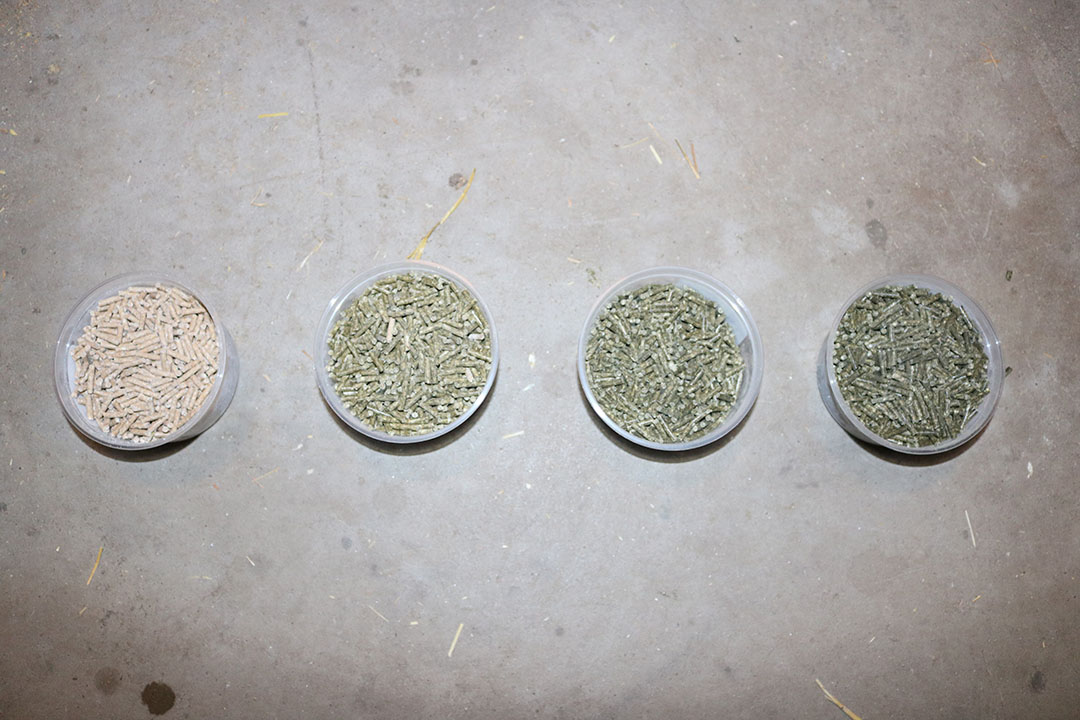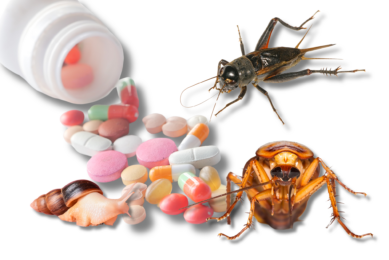Pigs thrive on protein from clover grass

Experiments carried out at Denmark’s Aarhus University have demonstrated that green protein extracted from clover grass is a very useful diet for pigs. That applied to both pig welfare, growth, feed use as well as meat quality and taste.
Within the framework of the project SuperGrassPork, researchers from the Department of Animal Science at Aarhus University (AU) carried out a feeding experiment in organic pigs, which were fed compound feed with protein extracted from clover grass.
In a news release on the university’s website, it is described that the project purpose was to examine the effect achieved when part of the traditional protein – typically soya – was replaced by protein extracted from locally produced clover grass. The experiment was accomplished as a dosage-response trial, and the research results demonstrated that the pigs are doing fine with up to 15% grass protein in their feed rations.
Use of protein extracted from clover grass
In the news article, Dr Lene Stødkilde, researcher at the university’s Department of Animal Science, said: “Our results are very positive, as the use of protein extracted from clover grass possesses a huge potential in several areas. Firstly, it will secure the supply of locally grown protein for the increasing production of organic pigs in Denmark; and secondly, the cultivation of grass will increase productivity in the fields and – at the same time – contribute to reduce nitrogen leaching and pesticide consumption.”
The clover grass protein was extracted at a minor biorefining plant at AU Foulum. During the feeding project at AU Foulum, 48 pigs (ranging from the age of 6 weeks and until slaughter) were divided into 4 groups, which were fed the following 3 types of feed with different amounts of grass protein as well as a control feed with no clover grass protein:
- Control;
- 5% clover grass protein;
- 10% clover grass protein;
- 15% clover grass protein (Danish raw materials only).
The percentages listed above is the amount of protein included in the feed based on weight. The feeds were generally composed based on existing compound feeds used in practice when feeding organic slaughter pigs. The main ingredients of the experimental feed comprised barley, wheat, Chinese soya cakes, peas, broad beans and clover grass protein.
Growth for all experimental compound feeds
The results from the feeding experiment demonstrated that the pigs were thriving equally on all types of feeds, as there were no difference as to pigs’ weight, growth, feed intake and feed utilisation, the news article wrote. That meant that feed taste did not affect the pigs’ inclination to eat the feed, and the nutrients were used equally for all feed types. In addition, no health problems were observed for any of the groups during the experiment.

Regarding the meat percentage after slaughter, the results showed that the group of pigs that were fed 15% clover grass protein had a significantly higher meat percentage compared to the other groups. The higher meat percentage may be because grass protein has a slightly higher digestibility and a more optimal amino acid composition than the researchers expected.
“The more grass protein we add, the more optimum amino acid composition we will achieve,” said Dr Stødkilde, adding: “In other words, we cannot rule out that the pigs in the 15% feed group were fed more digestible protein and more essential amino acids than we aimed for when we composed the feed mixtures. However, this is good news for our feeds, as a higher digestibility implies that less grass protein is needed in feed in order to achieve an excellent growth and meat percentage.”
Antibiotic Reduction Special:
Moving away from antibiotics can be challenging and requires a new way of thinking. This special edition explores the latest methods for raising healthy livestock without the use of preventive antibiotics.
More omega-3 fatty acids in the meat
The news article also explained that the researchers also examined the fatty acid composition of the meat, and the results demonstrated that the more clover grass protein added to the feed, the higher the omega-3 fatty acid content of the meat. All 4 groups displayed the same percentage of unsaturated fat, and thus only the relation between omega-3 and omega 6-fatty acids changes in favour of the content of omega-3 fatty acids.
Also interesting: Herbs for healthier cows and lower costs
Dr Stødkilde said, “From a health perspective, it is good that the meat has a higher content of the useful omega-3 fatty acids. At the same time, we are not interested in too many unsaturated fatty acids as this may increase rancidification. Therefore, additional antioxidants have been added to the feed in the form of vitamin E in order to prevent increased oxidation and thus rancidification.”
No difference in texture or taste
There are no differences in taste whether pigs are fed green protein or not. The experiment was completed in the spring of 2019, and – in cooperation with Danish Crown – a taste event was held including an ‘informal’ blind tasting of the meat from the experiment. None of the participants were able to see or taste any differences, a fact that was subsequently confirmed by a professional tasting panel.
The results thus demonstrated that pigs may easily be fed grass protein. Dr Stødkilde said, “And it is very positive that we are able to produce ordinary pork based on locally produced grass protein without compromising with quality and taste. The next step will be an optimisation of biorefining processes in order to ensure a considerable and stable protein yield of the highest quality, as well as a calculation of costs before we implement this.”
Also interesting: Back in 2017 the SuperGrassPork aimed to find out whether grass or clover could be a suitable protein source for organic pigs. Find out more…











